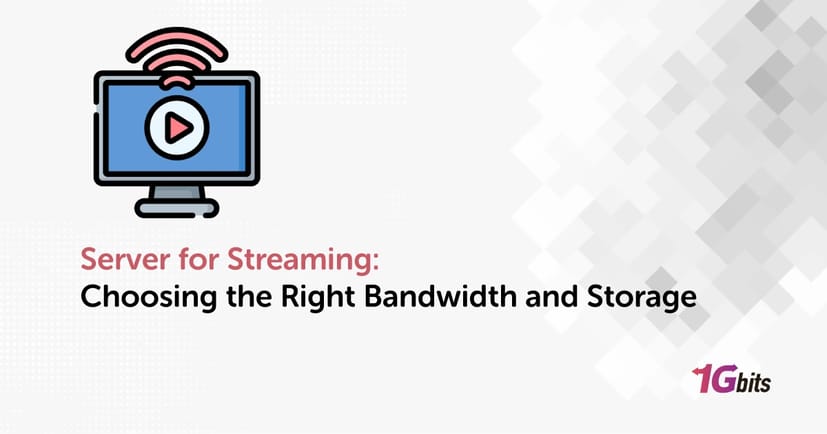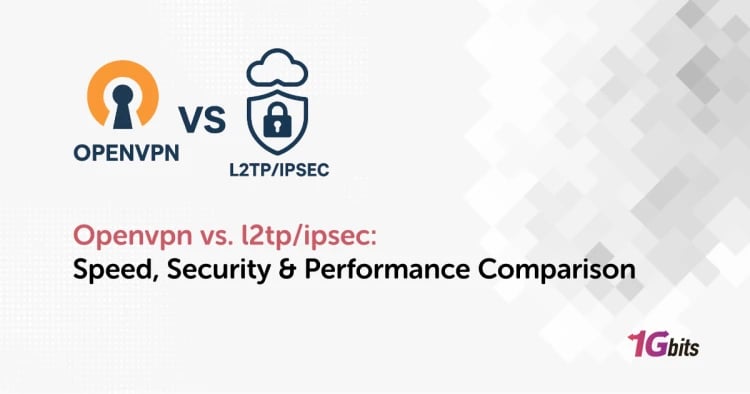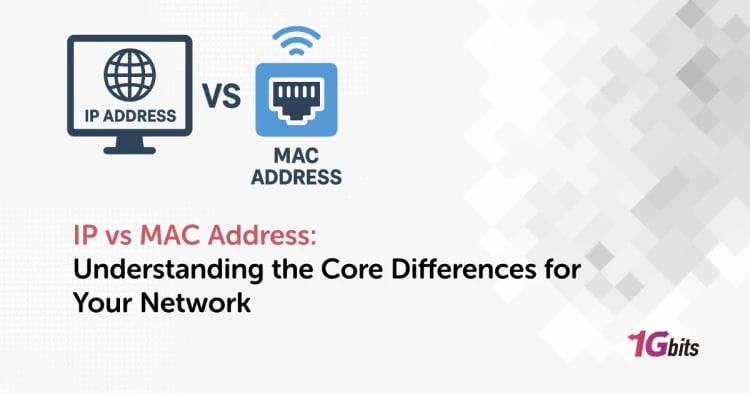Introduction
When you buy a streaming server, two factors decide whether your viewers enjoy a smooth, high-quality experience or leave frustrated — streaming server bandwidth and streaming server storage requirements. These two technical elements affect video resolution, buffering time, and the overall user experience, whether you’re running a live event or hosting a video-on-demand (VOD) library.
Bandwidth ensures your video streams are delivered quickly and consistently, while storage determines how much content you can host and how fast it can be retrieved. If either is underestimated, even the best streaming server setup can fail to meet user expectations.
In this guide, you’ll learn everything you need to choose the right bandwidth and storage, how to calculate how much bandwidth for streaming you need, how to find the best storage for streaming servers, and how to match your requirements with the right streaming server hosting plan.
Tip: If you also want to understand how to select the hardware and configuration for your server, see our Choosing the Right Server for Streaming guide.
Understanding Bandwidth for Streaming Servers
What is Bandwidth in Streaming?
In the context of streaming servers for video, bandwidth refers to the maximum rate at which data can be transferred from your server to your viewers. Higher streaming server bandwidth means you can serve more viewers at higher resolutions without buffering or interruptions.
Bandwidth is measured in Mbps (megabits per second), which indicates data transfer speed — not file size. Each Mbps equals 1 MBps (megabyte per second), but the distinction matters when calculating requirements.
-
SD streaming: 2–3 Mbps per viewer
-
HD streaming (720p–1080p): 5–8 Mbps per viewer
-
4K Ultra HD streaming: 15–25 Mbps per viewer
For example, a bandwidth for live streaming setup delivering 4K video to 300 viewers might require more than 7 Gbps of total bandwidth capacity.
How Much Bandwidth Do You Need?
To calculate how much bandwidth for streaming your server needs, use this formula:
Bandwidth = Number of Viewers × Bitrate × Overhead
-
Number of Viewers: Peak concurrent viewers (not daily totals)
-
Bitrate: Data per second for your chosen resolution (in Mbps)
-
Overhead: Buffer for inefficiencies and protocol overhead, typically 1.1–1.3
Example calculations:
-
720p (3 Mbps) for 500 viewers: 500 × 3 × 1.2 = 1,800 Mbps (~1.8 Gbps)
-
1080p (5 Mbps) for 800 viewers: 800 × 5 × 1.2 = 4,800 Mbps (~4.8 Gbps)
-
4K (20 Mbps) for 300 viewers: 300 × 20 × 1.2 = 7,200 Mbps (~7.2 Gbps)
If you’re unsure, you can use a video streaming bandwidth calculator to model different resolutions and audience sizes.
Factors Affecting Bandwidth Needs
-
Concurrent Viewers
The more viewers watch simultaneously, the higher your total streaming server bandwidth requirement. Always calculate based on peak concurrent viewers. -
Streaming Resolution and Bitrate
Higher resolutions like 1080p and 4K require higher bitrates. For example: -
720p: ~3 Mbps
-
1080p: ~5 Mbps
-
4K: 15–25 Mbps
-
Live vs On-Demand Streaming
-
Live streaming requires continuous, low-latency delivery and higher bandwidth.
-
On-demand can use caching, which reduces bandwidth demand.
Storage Considerations for Streaming Servers
Types of Storage: SSD vs HDD
Choosing between SSD and HDD is critical when setting up your streaming server configuration. Your choice affects not only performance but also cost and durability.
|
Feature |
SSD (Solid State Drive) |
HDD (Hard Disk Drive) |
|
Speed |
Very fast read/write speeds, ideal for live streaming |
Slower, better for archival storage |
|
Reliability |
No moving parts, less prone to damage |
Mechanical parts can wear over time |
|
Cost |
Higher cost per GB |
Lower cost per GB |
-
Best storage for streaming servers (performance-focused): SSDs for quick access to frequently streamed content.
-
Cost-efficient storage: HDDs for large, rarely accessed VOD archives.
How Much Storage is Needed?
Your streaming server storage requirements depend on whether you stream live or host VOD content.
Live Streams
-
Minimal storage needed if not archiving.
-
If recording, a 1-hour live 1080p stream at 5 Mbps uses about 2.25 GB (5 ÷ 8 × 3600).
VOD Libraries
-
Large libraries require significant storage.
-
Example: 100 hours of 4K video at 15 Mbps = ~675 GB.
Compression and file format can reduce this, but always plan for growth.
Storage Scalability Options
-
Cloud Streaming Server Storage
Cloud storage offers virtually unlimited capacity and flexibility. Many streaming server providers integrate with CDNs to enhance bandwidth performance. -
Hybrid Storage Models
Combine SSDs (for trending or live content) with HDDs or cloud storage (for archives). This balances speed, cost, and scalability.
Additional Server Specifications for Optimal Streaming
Beyond streaming server bandwidth and storage, your hardware and network setup influence performance.
-
CPU: Handles encoding, transcoding, and stream packaging.
-
RAM: Affects buffering and caching speed.
-
Network Speed: Determines how well your streaming server hosting can handle large numbers of concurrent viewers.
-
CDN Integration: Use a CDN to improve delivery speeds worldwide, especially for a cloud streaming server.
Step-by-Step Guide to Choosing Bandwidth and Storage
This streaming server setup guide will help you match your streaming needs to the right streaming server plans and storage options.
1. Identify Your Streaming Type and Audience Size
-
Decide if you’re doing live streaming or on-demand (or both).
-
Estimate peak concurrent viewers, not just daily averages.
Example: If you plan to stream HD concerts to 1,000 viewers at once, you’ll need far more bandwidth than a small internal training stream for 50 people.
2. Calculate Required Bandwidth
Use the formula:
Bandwidth = Number of Viewers × Bitrate × Overhead
-
Overhead factor: usually 1.1–1.3 for buffering and protocol inefficiency.
-
Example for bandwidth for live streaming:
-
1080p (5 Mbps) × 1,000 viewers × 1.2 = 6,000 Mbps (~6 Gbps).
If you’re not confident in your math, a video streaming bandwidth calculator can do the heavy lifting for you.
3. Estimate Storage Needs
-
Live streaming without recording: minimal storage.
-
Live streaming with recording: multiply file size per hour by the number of hours stored.
-
VOD libraries:
-
Example: 200 hours of 720p at 3 Mbps = ~270 GB.
-
Factor in compression efficiency and consider formats that balance quality with space savings.
4. Match Requirements with Server Plans and Providers
-
Buy streaming server if you want full hardware control. Customize CPU, RAM, SSD/HDD size, and bandwidth.
-
Choose streaming server hosting if you prefer managed services and predictable streaming server pricing.
-
Opt for cloud streaming server or hybrid setups for scalability.
To explore detailed configurations and get help choosing the best streaming server, check out our Choosing the Right Server for Streaming guide.
Common Mistakes to Avoid When Selecting Bandwidth and Storage
-
Underestimating Bandwidth Needs
Calculating based on average viewers instead of peak can lead to buffering, dropped streams, and server crashes. -
Ignoring Scalability
Selecting a streaming server configuration without room to grow means you’ll quickly outgrow your resources. -
Overpaying for Unnecessary Storage
Large HDD or SSD capacities that you never fill can inflate costs, especially for startups or smaller VOD libraries.
Conclusion
Choosing the right streaming server bandwidth and streaming server storage requirements is a balancing act between performance and cost.
-
Too little bandwidth → buffering, poor quality, frustrated viewers.
-
Too much storage without a plan → wasted money.
Monitor your usage patterns, test under real-world conditions, and adjust resources as your audience grows. Whether you’re streaming a live sports event or running a 10,000-video on-demand library, the right combination of bandwidth, storage, and hardware will define your streaming success.
If you’re ready to get started, explore our top streaming servers for video on the Server for Streaming page and find a plan that matches your goals.








